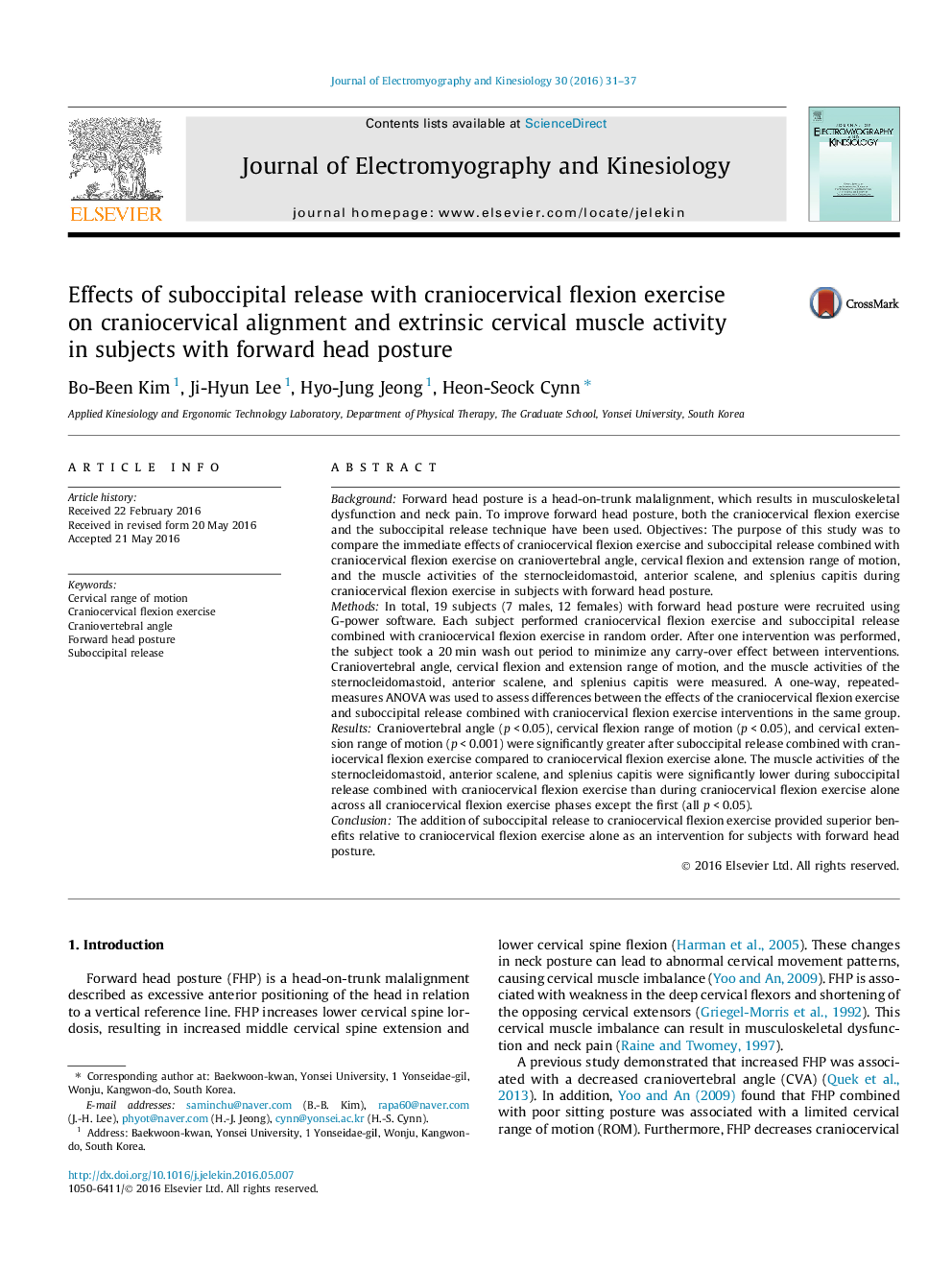| کد مقاله | کد نشریه | سال انتشار | مقاله انگلیسی | نسخه تمام متن |
|---|---|---|---|---|
| 4064369 | 1604183 | 2016 | 7 صفحه PDF | دانلود رایگان |

BackgroundForward head posture is a head-on-trunk malalignment, which results in musculoskeletal dysfunction and neck pain. To improve forward head posture, both the craniocervical flexion exercise and the suboccipital release technique have been used. Objectives: The purpose of this study was to compare the immediate effects of craniocervical flexion exercise and suboccipital release combined with craniocervical flexion exercise on craniovertebral angle, cervical flexion and extension range of motion, and the muscle activities of the sternocleidomastoid, anterior scalene, and splenius capitis during craniocervical flexion exercise in subjects with forward head posture.MethodsIn total, 19 subjects (7 males, 12 females) with forward head posture were recruited using G-power software. Each subject performed craniocervical flexion exercise and suboccipital release combined with craniocervical flexion exercise in random order. After one intervention was performed, the subject took a 20 min wash out period to minimize any carry-over effect between interventions. Craniovertebral angle, cervical flexion and extension range of motion, and the muscle activities of the sternocleidomastoid, anterior scalene, and splenius capitis were measured. A one-way, repeated-measures ANOVA was used to assess differences between the effects of the craniocervical flexion exercise and suboccipital release combined with craniocervical flexion exercise interventions in the same group.ResultsCraniovertebral angle (p < 0.05), cervical flexion range of motion (p < 0.05), and cervical extension range of motion (p < 0.001) were significantly greater after suboccipital release combined with craniocervical flexion exercise compared to craniocervical flexion exercise alone. The muscle activities of the sternocleidomastoid, anterior scalene, and splenius capitis were significantly lower during suboccipital release combined with craniocervical flexion exercise than during craniocervical flexion exercise alone across all craniocervical flexion exercise phases except the first (all p < 0.05).ConclusionThe addition of suboccipital release to craniocervical flexion exercise provided superior benefits relative to craniocervical flexion exercise alone as an intervention for subjects with forward head posture.
Journal: Journal of Electromyography and Kinesiology - Volume 30, October 2016, Pages 31–37